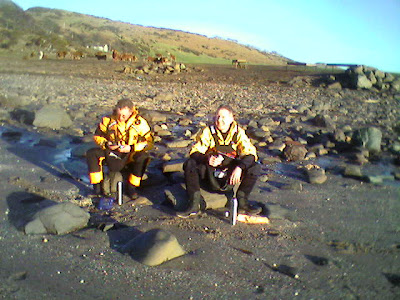
Our recent calm crossing to Arran on
MV Caledonian Isles has not been typical of this winter. Island communities in Scotland have been isolated for long periods when the ferries have been storm bound. Simon Willis's site recently carried remarkable pictures of the
Corran ferry sailing, despite stormy weather, to maintain the link to communities on the isolated Ardnamurchan peninsula.
This week, the Daily Mail and the
Independent have reported calls for a tunnel to be built connecting the Western Isles to the mainland. Suggested routes are either from Stornoway on Lewis to Ullapool (41 miles) or from Benbecula to Dunvegan (25 miles) on Skye, which already has a bridge link to the mainland. If this dream is realised it would transform access to the Outer Hebrides and make a link across the
Sound of Harris even more vital.

Even in calm conditions, we felt a sense of isolation and commitment as MV Caledonian Isles steamed away from Brodick back to the mainland, an hour away.
Here are another couple of photos from our
Arran trip taken with the little Sony DSC U60 camera.

This is an over the shoulder shot looking back at Tony, who is dwarfed by the scale of the sea and the mountains of Arran.

The sun is well set behind the mountains of Arran.
At maximum aperture, the shutter speed was only 1/25th second. I panned on Tony so he is reasonably sharp. The movement and slow shutter speed have blurred the background. Despite its imperfections, I like this photo because it brings back the chill and uncertainty of the approaching darkness. We still had an hour paddling back to the mainland.
We sea kayakers are lucky, we can choose when to make our crossings, islanders and their provisions and exports cannot.

















